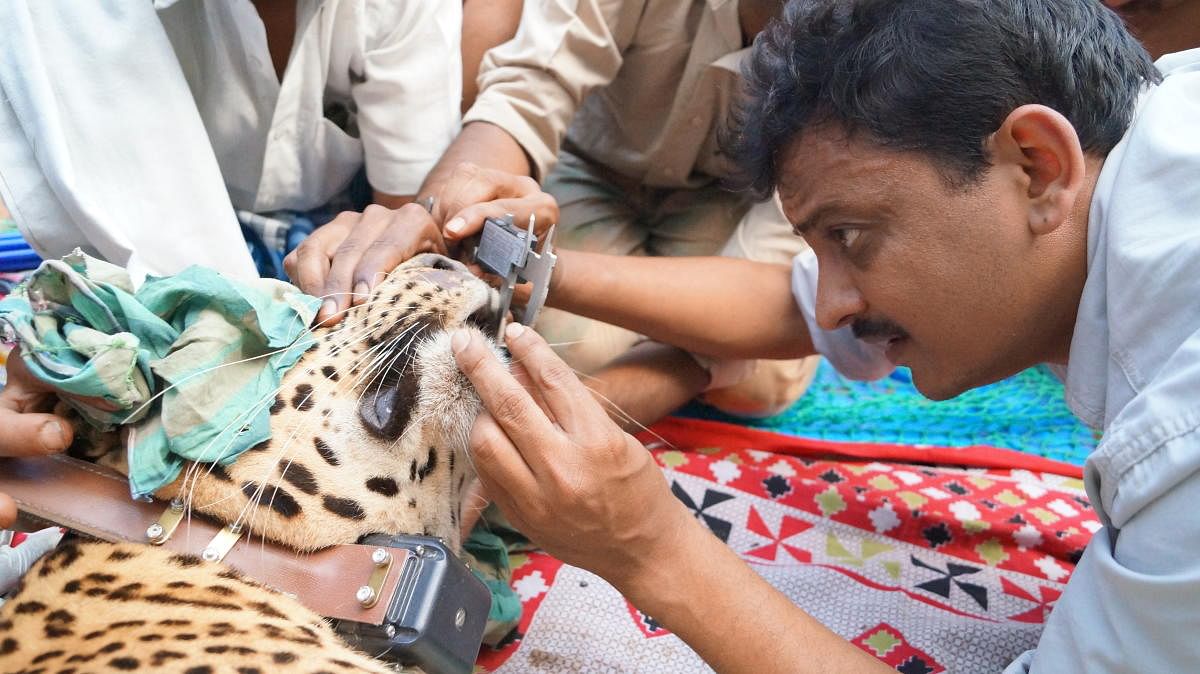
Setting out to estimate the population of leopards, it was not a cakewalk for Sanjay Gubbi and his team of researchers at the Nature Conservation Foundation (NCF).
The team, over six years, has had varied experiences, including escaping death by a whisker, while studying the life cycle of leopards in the wild.
In fact, whenever leopards strayed into human habitation resulting in man-animal conflict in the last six years, KFD officials would summon Gubbi and his team to help in rescue operations. About 25 leopards have been rescued by our team,” recalled Gubbi.
It was during one such rescue operation at Vibgyor School in Mahadevapura, Bengaluru, in 2016, that Gubbi was attacked by a leopard. With nothing to protect him, the leopard left Gubbi severely injured. Staffers at NCF opine that he escaped from the jaws of death. The leopard had chipped at his right humerus bone, besides biting him at various places. Due to multiple surgeries, Sanjay had to be away from the field and research work for almost a
year.
“I would like to thank the Forest department, which supported me all through the study. My staff were not only cooperative, but also motivated me when I was ailing. Further, the leopard is not as charismatic as the tiger and convincing people to study about its life cycle was indeed a difficult task. However, at the end, all of us have the satisfaction that we could collate all details from field studies and for the first time, scientifically estimate the population of leopards in Karnataka,” Gubbi said.
